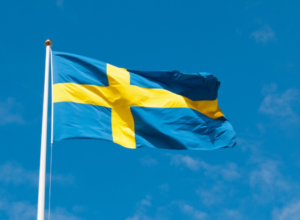
The Swedish government has decided to provide a new humanitarian aid package of SEK110 million ($10.4 million) to Ukraine, which will be used to meet increased needs ahead of the winter period, the Swedish government website said Sunday.
“Russia has targeted civilian infrastructure and deprived Ukraine of much of its heat and electricity supply. Of course, the colder it gets, the more serious the consequences. Therefore, a significant part of the population is experiencing difficulties in heating their homes and cooking. That is why the government has decided to allocate 110 million crowns to a number of humanitarian organizations in Ukraine,” said Benjamin Dusa, Minister of Foreign Development and Foreign Trade.
The humanitarian package is distributed among four organizations. The Ukrainian Red Cross received SEK50 million; the support focuses on, among other things, guaranteed access to heat and electricity, distribution of food, hygiene products, medicines and water. UNHCR received SEK20 million; Sweden will contribute to help internally displaced persons prepare and protect themselves before and during the coming winter. UNDP received SEK30 million for demining. UNFPA will receive SEK10 million to address women’s sexual and reproductive health needs, prevent sexual and gender-based violence and support survivors of violence.
Earlier, on October 17, the Nordic and Baltic countries presented a new support package to Ukraine to repair damaged and replace destroyed energy systems with new ones before winter. Sweden’s contribution amounted to SEK320 million ($30 million).
“This support package is important to support the Ukrainian energy sector and help keep Ukrainian society functioning and Ukrainian homes warm,” Dusa said.
According to the government, Sweden has previously allocated a total of SEK57.4 billion ($5.4 billion) in support for Ukraine since Russia’s full-scale invasion of Ukraine in February 2022: humanitarian, military and financial support, as well as support for reconstruction and reform work. Including the new support packages, Sweden’s total contribution will amount to more than SEK57.8 billion.
Including in 2024 alone, the Swedish government has decided to allocate a total of SEK1.8 billion for additional support for the Ukrainian energy sector. After two aid packages in October, this amount exceeded SEK2.2bn (over $210m).
Geographical structure of Ukraine’s foreign trade (imports) in Jan-July 2024, thousand USD

Open4Business.com.ua
Geographical structure of Ukraine’s foreign trade (exports) in Jan-July 2024, thousand USD

Open4Business.com.ua

In Ukraine this week there is a tendency of reduction of prices for white cabbage, analysts of EastFruit project report. Producers attribute this price situation to the excess of production in the market, and a significant part of the market supply is cabbage of medium-late varieties, which is not suitable for long-term storage.
At the moment, the prices for white cabbage are voiced by producers within the range from 15 to 23 UAH/kg ($0.36-0.56/kg), which is on average 16% cheaper than at the end of last week. Market participants explain the wide price range in this segment by different qualitative characteristics of the offered vegetables.
According to the project analysts, most farms are still active harvesting works, as a result of which the supply on the market is growing. At the same time, the demand for these products remains extremely low. Wholesale companies and retail chains are ready to purchase only in small wholesale, referring to the very limited period of realization, as most farmers offer for sale cabbage of low quality.
It should be noted that despite the negative price trend, the current prices for white cabbage in Ukraine are on average 2.9 times higher than in the same period last year. At the same time, market participants do not exclude that prices for this product will continue to decline, as many farms are actively harvesting due to improved weather conditions. As a result, the gradual growth of cabbage supplies to the market will force agrarians to continue to concede in price, if the situation with the rate of sales does not change.
You can get more detailed information about the market development of white cabbage and other horticultural products in Ukraine by subscribing to the operative analytical weekly – EastFruit Ukraine Weekly Pro. Detailed information about the product can be found here.
Import changes in % to previous period in 2023-2024

Open4Business.com.ua

China’s economic growth rate may fall “substantially below 4%” if the country’s authorities fail to implement reforms aimed at supporting domestic demand, said the head of the International Monetary Fund (IMF) Kristalina Georgieva. The main obstacle to the recovery of consumer confidence in the PRC remains the troubled real estate sector, and the government needs to take measures aimed at fixing this problem, she said at a briefing in Washington.
In addition, in response to a question from an Egyptian journalist, Georgieva said she would soon visit Egypt to discuss the terms of an $8 billion loan program.
“We are open to adjusting the Egyptian program or any other program so that it best meets the interests of the people,” she said, adding that the Egyptian government still needs to implement reforms, and the sooner the better.
Earlier, Egyptian authorities signaled that it was becoming more difficult for them to meet the conditions voiced when granting the IMF loan due to geopolitical tensions in the region. Those conditions include, among others, cuts in government spending, including subsidies on fuel, electricity and food.